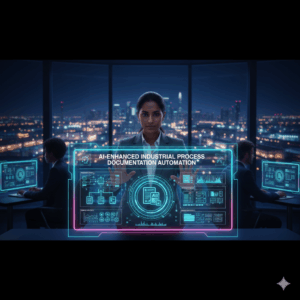Tech for Good: Applications That Are Providing Solutions to Real-World Issues

Tech for Good: Applications That Are Providing Solutions to Real-World Issues
When we think of technology, we often think of entertainment, productivity, or convenience. For example, the applications that we use to browse, shop, and stream are examples of this. On the other hand, something more significant is taking on under the surface of social media feeds and films that are going viral. A gradual revolution is now taking place, one in which mobile applications are not only altering people’s lives but also saving them.
A new generation of developers and inventors is inventing tools that are built not only for profit, but for purpose, in a world that is confronting issues such as climate change, poverty, gaps in healthcare, and mental health crises. These are the technologies that demonstrate that innovation can have a heart about it. These applications are utilizing code to bring about change in a variety of areas, including disaster assistance, access to clean water, education, and mental wellbeing.
Let’s take a look at the ways in which technology is being put to use for the betterment of society, as well as the ways in which regular people are developing applications that provide solutions to some of the most pressing issues facing the globe today.
When an Application Turns Into a Lifeline
Imagine that you are a resident in a region that is often affected by flooding. You have no clue where the closest shelter is located, the roads have been flooded away, and communication connections have been severely disrupted. An application becomes the only connection to real-time safety for a great number of communities. During times of natural disasters, emergency response platforms such as disaster warning apps are now able to employ satellite images, crowd-sourced data, and global positioning systems (GPS) to direct people to safe areas. These techniques have already been important in preventing the loss of thousands of lives in countries such as Indonesia, Haiti, and other regions of Africa.
In a similar vein, encrypted messaging applications that are also designed with encryption are assisting people and activists in countries that are experiencing political instability in communicating without the worry of being monitored. In refugee camps, mobile applications are being used to register families that have been displaced, monitor immunizations, and reconnect children who have been separated from their parents. Despite the fact that these are not the most glamorous applications that are now trending on the App Store, they are quietly carrying out the job that is most important.
A Pocket-Sized System for Healthcare
The lack of access to healthcare continues to be one of the most significant concerns facing the world, particularly in rural and underserved areas. However, simple mobile applications are rapidly decreasing that gap.
Apps for mobile devices are now being used by medical professionals in some regions of India and Sub-Saharan Africa to diagnose ailments, maintain digital medical data, and link patients with physicians who are located remotely. There are even some applications that utilize artificial intelligence-powered symptom checkers to assist users in determining what is wrong and when it is necessary to seek urgent treatment.
The state of mental health has also undergone significant change. Millions of individuals are now using health apps for activities such as therapeutic exercises, monitoring their mood, and practicing mindfulness. Despite the fact that these tools are not intended to take the place of professional treatment, they do provide essential first steps for those who may otherwise suffer in silence.
When the COVID-19 pandemic was going on, we saw how rapidly applications were built for tracking contacts, registering for vaccines, and gaining access to information. This demonstrated that technology is able to adapt in real time exactly when humanity needs it the most.
Eliminating Hunger and Reducing Food Waste
Food waste continues to be one of the most alarming manifestations of injustice in a society where millions of people may be seen going to bed hungry. Apps, on the other hand, are beginning to shift that imbalance. A number of platforms are now in the process of connecting low-income families and shelters with people who have extra food, as well as grocery shops and restaurants. These applications monitor the dates on which food expires, connect contributions with beneficiaries in the immediate area, and assist in redistributing food that would have otherwise been thrown away in landfills. Hunger and the environment both benefit from this victory.
People in urban communities are able to provide or request leftover meals, garden produce, or other necessities via the use of food-sharing applications. Initially, these initiatives were tiny and local, but they have now developed into worldwide food redistribution networks that are driven by simple applications and individuals who are eager to participate.
A Global Education Without Borders
It has been a long-held hope for children living in conflict zones, females who are refused access to schools, and those who live in communities that do not have access to power to get an education. This narrative is being rewritten, however, by mobile technology. Instruction in mathematics, science, reading, and languages is being brought to locations where textbooks are scarce via the use of offline-first applications. These apps are intended to function with minimal or no internet access. Children are kept interested in some applications by use of interactive games. For those who are interested in learning a new trade, there are others who provide vocational training.
Students in refugee camps or crisis zones are regaining a feeling of optimism and continuity via the use of education applications. Without these apps, these students may otherwise lose years of learning. A great many of them are open-source and customizable, which implies that they may be modified to accommodate a variety of cultural and linguistic settings. Using Code to Combat Climate Change Although climate change may seem to be a large and intangible issue, technology is assisting individuals in participating in modest, real-world acts that may have a significant impact.
Some applications keep track of your carbon footprint and provide recommendations on how you might lessen it. These recommendations may include modifying your commute, the foods you consume, or the way you purchase. Users are connected to local environmental initiatives, tree-planting efforts, and sustainable energy solutions via the usage of other platforms.
Farmers are increasingly adopting climate-smart applications, which helps them decrease waste and safeguard crops during uncertain seasons by predicting weather patterns, monitoring soil conditions, and suggesting better planting tactics. These apps also come with the ability to monitor soil conditions.
Apps are assisting in the monitoring of pollution, the management of trash, and the provision of access to clean water in urban areas. This is transforming individuals into everyday environmentalists who are equipped with data and guidance.
A Technology That Has a Moral Compass
“Tech for good” is not simply about innovative ideas; rather, it is about putting people first. This is the driving force behind its emergence. The most successful of these applications are not written in boardrooms in Silicon Valley. The communities that they intend to serve are the ones that construct many of them. Developers at the grassroots level, non-governmental organizations (NGOs), and local governments are working together to produce technology that is really inclusive and addresses real-world issues.
Moreover, this trend indicates a change in the expectations that consumers have. People are sick of having to browse endlessly, advertisements, and designs that are addicting. Tools that improve not just their lives but also the lives of others are what they want. This demonstrates that innovation does not necessarily have to be devoid of any kind of heart. It has the potential to be intelligent, scalable, and kind.
What You Can Carry in Your Pocket
When we think about changing the world, we often consider it to be something that takes enormous resources or international organizations. On the other hand, there are occasions when all that is required is a few lines of code and the appropriate concept.
The next time you open your phone, give some thought to the power that it has. Not just to amuse or divert attention, but also to communicate, inspire, and find solutions. Technology that is developed with compassion and a sense of purpose has the potential to reach areas that governments are unable to, and it can alter lives in ways that textbooks could never have envisioned. There is more to the future of technology than simply artificial intelligence or automation. Those who care are found in applications.





